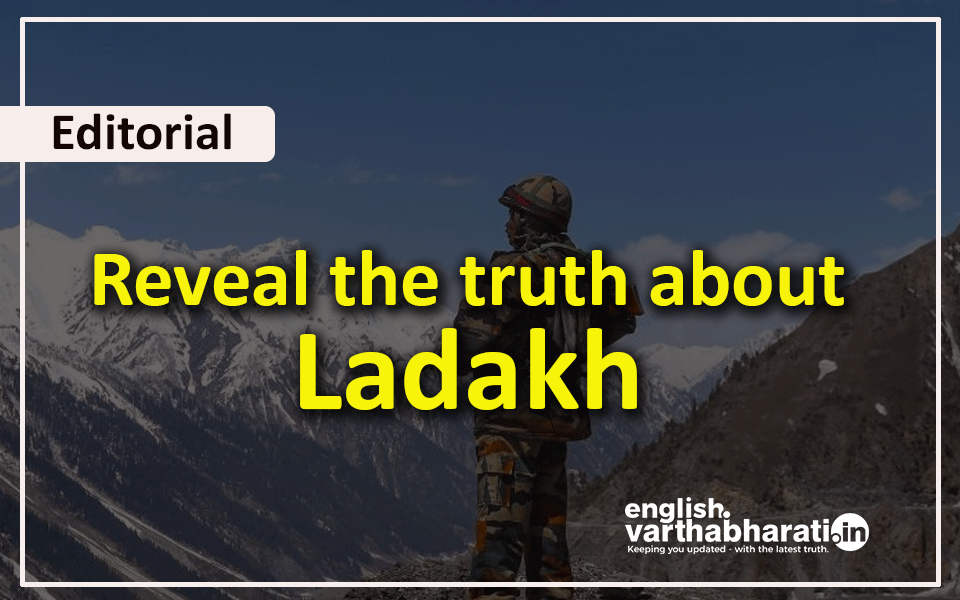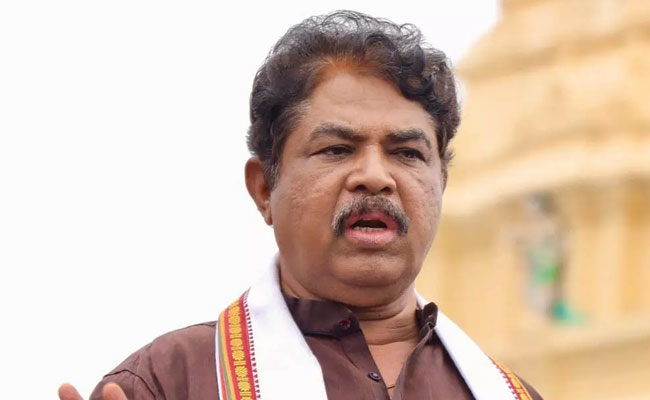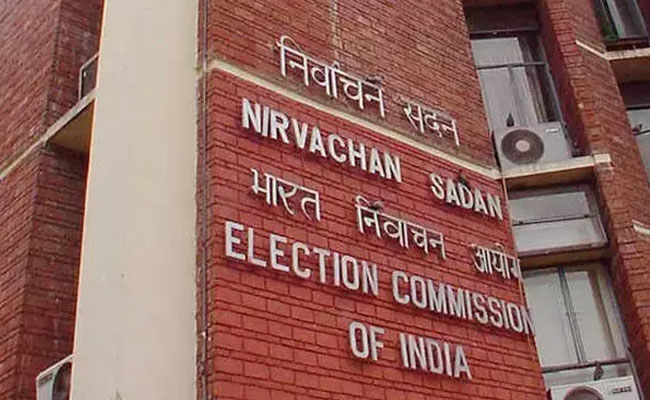Is questioning the Centre about the developments in the border area of Line of Actual Control (LAC) in Eastern Ladakh an anti-national act? By terming as ‘anti-national’ Congress leader Rahul Gandhi’s demand that the truth about the border standoff in the Eastern Ladakh region should be revealed, the Centre is avoiding presenting the true picture before the nation. In similar such situations with regard to border disputes with Pakistan, the Centre has always adopted a belligerent stand by citing the country’s sovereignty. It had even convened a press conference to make an announcement about surgical strikes. Though the Centre later failed to answer questions regarding the actual outcome of the surgical strike and the number of terrorists killed in the operation, several ministers of the Modi cabinet repeatedly issued statements about the surgical strikes, some of them even posing a security threat to the country by revealing too many details.
But in the present stand-off with China, Prime Minister Modi has not made any statement and the Opposition is being attacked for seeking clarifications. The External Affairs ministry has now indicated that the talks between the Indian and Chinese army held on June 6 to ease the tense situation between the two countries was “disappointing” and “incomplete.” ANI, the news agency that is usually the first to release government news, in its tweet on June 9, quoting senior government officials, stated that both Indian and Chinese army were withdrawing forces from different points of East Ladakh. According to the tweet, China’s People Liberation Army has withdrawn by 2.5 kms its Army and Naval forces from the Galwan patrolling point 15 and HotSpring areas. Contradicting this, in a statement released on June 7, the external affairs ministry only said that the border talks are going to be long drawn and the only way to address the border dispute is by taking small steps ahead.
The withdrawal of Chinese forces from LAC is a huge win for the military and political strategies of the Narendra Modi government. With this, the government has the credit of restoring the situation to pre-April 2020 times. Despite this, the handling of the border situation by the Centre and the Indian army has given rise to several significant questions. The silence of the Modi government of the last several weeks with regard to the border dispute around the LAC in Eastern Ladakh has cast aspersions about the way the situation was handled. Should India pay the price for withdrawal of troops from both the sides?
The Centre has not revealed any detail about the modalities of understanding reached with the Chinese military officials and also concessions handed over to the Chinese army about the deployment of local military forces and the development of basic infrastructure facilities in the borders. It has also been refusing to divulge details about the actual insurgence of Chinese forces through the LAC in East Ladakh. The government is deliberately hiding these issues from the people fearing political consequences.
Despite several bilateral agreements and talks, China has always been giving excuses and refusing to recognize the LAC border. It has consistently deployed forces around the Galwan, Hot Springs, and Pangong Tsu areas and has obstructed Indian forces from patrolling the area. China’s main political agenda is to constantly raise unresolved border issues and enter border areas illegally and display its prowess over India. Its objective is to make sure that India does not emerge as its strong political, military, and economic force at the international level. Its other strategy is to silence India over the China-Pakistan Economic Corridor (CPEC), South China Ocean, and Indo-Pacific disputes and make sure that India does not develop basic infrastructure around border areas.
Contrary to the claims of the government that the tension around the border area has eased, experts hold the view that the border dispute in LAC, Eastern Ladakh, has not been resolved. Whatever be the truth, the statements of the Modi government and the Indian Army do not sound credible anymore. It appears that the Indian government has supported the stand of the Chinese government, thereby sending wrong signals to the international community.
In such a situation, the Modi government should take into confidence the Indian Parliament and the people of the country. The Prime Minister should hold talks with the Army and update the people regularly about the actual developments that are taking place in border areas. It is the responsibility of the Prime Minister to resolve the doubts and put at rest the anxiety of the people that the border dispute has triggered.
Let the Truth be known. If you read VB and like VB, please be a VB Supporter and Help us deliver the Truth to one and all.
Bengaluru (PTI): Targeting Chief Minister Siddaramaiah and the Congress government in Karnataka on corruption, BJP leader R Ashoka on Friday said, being foolish was forgivable, but being "shameless" in public life was not.
The Leader of Opposition in the state Assembly claimed that in just 30 months of its tenure, the Congress administration has broken every previous record on corruption-related controversies.
He was responding to Siddaramaiah's post on 'X' on Thursday hitting back at the BJP, stating that Upa Lokayukta Justice Veerappa's claims of "63 per cent corruption" were based on his report in November 2019, when BJP's B S Yediyurappa was the CM.
"But Ashoka, without understanding the Upa Lokayukta's statement properly, has ended up tying the BJP's own bells of sins onto our heads and has effectively shot himself in the foot," the CM had said, as he accused Ashoka of foolishness for trying to twist Veerappa's statement to target the current government.
Responding, Ashoka said, "it is one thing to be called foolish in politics, that can be forgiven."
"But in public life, especially in the Chief Minister's chair, one must never become shameless," Ashoka posted on 'X' on Friday addressing Siddaramaiah.
Noting that the CM himself had admitted on the floor of the Assembly that a Rs 87 crore scam took place in the Valmiki Development Corporation, he said that when a CM acknowledges such a massive irregularity inside the floor of the House, the natural expectation is immediate action and accountability.
"But instead of taking responsibility, you continue in office as if nothing has happened. What should the people of Karnataka call this, if not sheer shamelessness," he asked.
Pointing out that the CM's Economic Advisor and senior Congress MLA Basavaraja Rayareddy had publicly stated that under Congress rule, Karnataka has become No.1 in corruption, Ashoka said, "Yet, you still cling to the Chief Minister's chair without a moment of introspection. What should the people of Karnataka call this, if not sheer shamelessness."
Senior Congress MLA C R Patil had exposed the "money for House" racket in the Housing Department and even warned that the government would collapse if the details he has were made public, Ashoka said.
"Despite such serious allegations from within your own party (Congress), you neither initiated an inquiry nor acted against the concerned minister. What should the people of Karnataka call this, if not sheer shamelessness," Ashoka asked the CM.
Highlighting the "40 percent commission" allegation Congress made against the previous BJP government, the opposition leader said, the commission that the Siddaramaiah government appointed concluded that the accusation was baseless.
"After your own panel demolished your own claim, what moral right do you have to continue repeating that allegation. What should the people of Karnataka call this, if not sheer shamelessness," he asked.
For the last two and a half years, Karnataka has been 'drowning' in corruption, scandals, irregularities and allegations across departments. Ashoka said, "If I begin listing every case that emerged under your government, even 24 hours would not be enough."
"And the most tragic aspect of your administration is this: the unbearable pressure, corruption demands and administrative harassment under your government pushed several officers and contractors into extreme distress - including the suicide of Chandrasekharan which exposed the Valmiki Development Corporation scam - a sign of how deeply broken the system has become under your watch," he said.
Instead of fixing this hopeless environment, the government has tried to bury every complaint and silence every voice, he charged.
"Being foolish is forgivable, but being shameless in public life is definitely not."
"When your own ministers admit scams, when your own advisors certify Karnataka as No.1 in corruption, and when your own MLAs expose rackets inside your departments - clinging to power without accountability is not leadership. It is shamelessness in its purest form." PTI KSU
Earlier on Thursday Ashoka had demanded that the corruption case and allegations in the state against the Congress government be handed over to a CBI investigation, citing a reported statement by Upalokaykta Justice Veerappa alleging "63 per cent corruption", following which Siddaramaiah hit back at the BJP leader.





